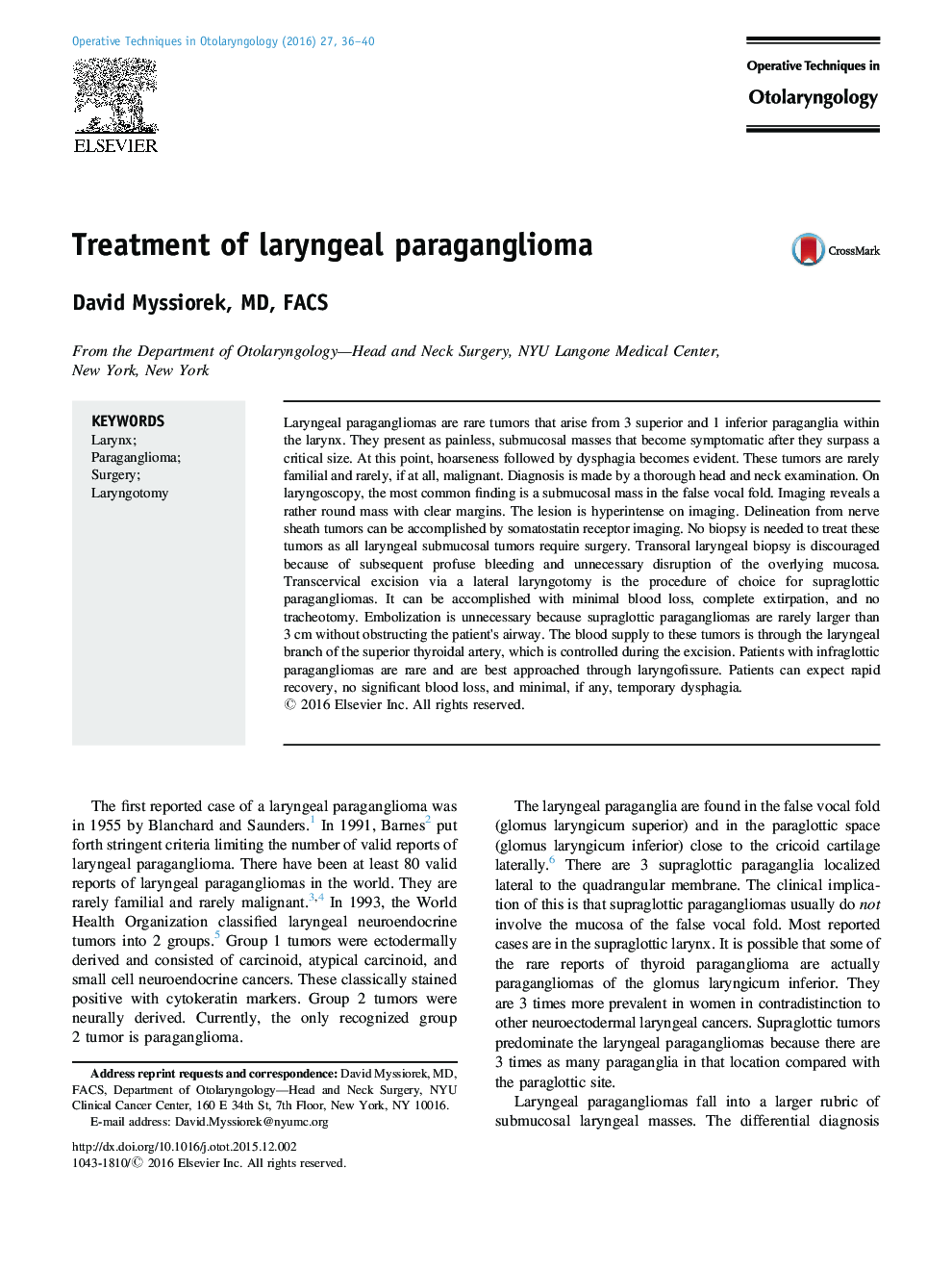| Article ID | Journal | Published Year | Pages | File Type |
|---|---|---|---|---|
| 4122554 | Operative Techniques in Otolaryngology-Head and Neck Surgery | 2016 | 5 Pages |
Laryngeal paragangliomas are rare tumors that arise from 3 superior and 1 inferior paraganglia within the larynx. They present as painless, submucosal masses that become symptomatic after they surpass a critical size. At this point, hoarseness followed by dysphagia becomes evident. These tumors are rarely familial and rarely, if at all, malignant. Diagnosis is made by a thorough head and neck examination. On laryngoscopy, the most common finding is a submucosal mass in the false vocal fold. Imaging reveals a rather round mass with clear margins. The lesion is hyperintense on imaging. Delineation from nerve sheath tumors can be accomplished by somatostatin receptor imaging. No biopsy is needed to treat these tumors as all laryngeal submucosal tumors require surgery. Transoral laryngeal biopsy is discouraged because of subsequent profuse bleeding and unnecessary disruption of the overlying mucosa. Transcervical excision via a lateral laryngotomy is the procedure of choice for supraglottic paragangliomas. It can be accomplished with minimal blood loss, complete extirpation, and no tracheotomy. Embolization is unnecessary because supraglottic paragangliomas are rarely larger than 3 cm without obstructing the patient׳s airway. The blood supply to these tumors is through the laryngeal branch of the superior thyroidal artery, which is controlled during the excision. Patients with infraglottic paragangliomas are rare and are best approached through laryngofissure. Patients can expect rapid recovery, no significant blood loss, and minimal, if any, temporary dysphagia.
